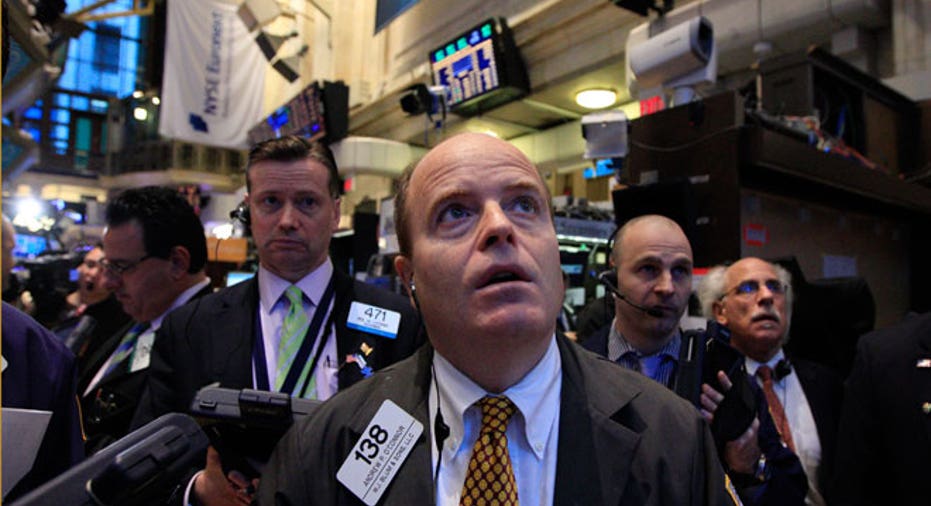What if Stocks Get Too Hot? Melt-Up Could Trigger Steep Correction

For much of the past year, skeptics of the current bull market had a long list of valid arguments, including everything from a dangerous breakup of the eurozone and violence in the Middle East to political gridlock in D.C.
With those aforementioned concerns easing (at least for now) and the Dow Industrials recently recapturing the 14000 threshold, even some longtime bulls now acknowledge a new worry: the atmosphere could quickly become too bullish for stocks.
If investors suddenly become too exuberant for equities, Wall Street could then suffer a steep correction when confronted by the re-emergence of an old problem or signs the Federal Reserve is worried about an asset bubble.
“I’m worried about a melt-up that could propel the S&P 500 to my yearend target of 1665 before the middle of the year,” Ed Yardeni, president of investment advisory Yardeni Research, warned clients this week. “That might be too much of a good thing.”
A surge to 1665 would represent an impressive 10% leap for the broad index from Wednesday’s close at 1512, leaving the market up nearly 17% in 2013 alone.
Such a rally could prompt Fed officials to signal an increased willingness to turn off the lights of the easy-money party that has long been a central pillar of the current bull market.
There have already been signs the markets may have rallied too fast, underscored by a trio of triple-digit retreats this week that have backed the blue chips away from 14000.
2013 Starts With a Bang
Overall, Wall Street veterans and retail investors are impressed with the bullish start to the year, even with the recent pullback.
Kick started by the fiscal-cliff compromise, the current rally has carried the major indexes within striking distance of all-time highs. Market internals have also mostly been very encouraging, highlighted by broad-based gains across the spectrum of market capitalization and sector.
Investors have largely shrugged off bad news, focusing instead on cautious optimism about Europe, a strong first half of earnings season and new evidence suggesting the U.S. private sector is withstanding ongoing fiscal uncertainty.
“It would appear, while the numbers continue to be somewhat volatile, that we are in a more self-sustaining place” in the economic recovery, said Eric Weigand, senior portfolio manager at U.S. Bank Wealth Management, pointing to “material improvement” in the labor and housing markets.
Encouraged by the recent gains, even retail investors appear to be slowly edging off the sidelines.
According to the Investment Company Institute, U.S. mutual funds in January experienced the first positive month of inflows since April 2011, hauling in $23.73 billion over the past three weeks alone.
“People are fearful of underperforming and are playing catch up. Many people are feeling pressure to join the move,” said Peter Kenny, managing director at Knight Capital Group (NYSE:KCG).
Too Bullish?
Likewise, investor sentiment gauges, which some look at as contrarian indicators, highlight the degree of bullishness in the marketplace now.
The ratio of bulls to bears compiled by Investors Intelligence rallied to nine-month highs of 2.43 last week, a level that Yardeni said “has often been a good sell signal in the past, though mostly just before minor corrections.”
The fear among some market bulls is that a so-called “melt up” in equities could trigger concerns inside the Federal Reserve that the central bank’s unprecedented easy money policies are fueling another stock bubble.
“The market could then have a nasty correction during the second half of the year if we learn that Fed officials are increasingly alarmed that they are doing it again, i.e., pumping air into another stock market bubble,” said Yardeni.
But some doubt the Ben Bernanke-led Fed will take away the punch bowl just yet.
“I think it is a bubble and I think it will collapse but I wouldn’t be so sure this is going to correct any time soon because that’s the nature of bubbles: they go on a lot longer than expected,” said Jim Rickards, author of Currency Wars and a partner at hedge fund JAC Capital Advisors.
Weigand said he believes for now the market is “walking that thin line” between growth that still needs help from the Fed and developments that would cause the central bank to hint at higher rates.
“We still think there are opportunities for the market to progress from here,” he said. “We do acknowledge we have seen the markets move abruptly higher early this year. It wouldn’t change our outlook considerably if we did see a pause in the near term.”